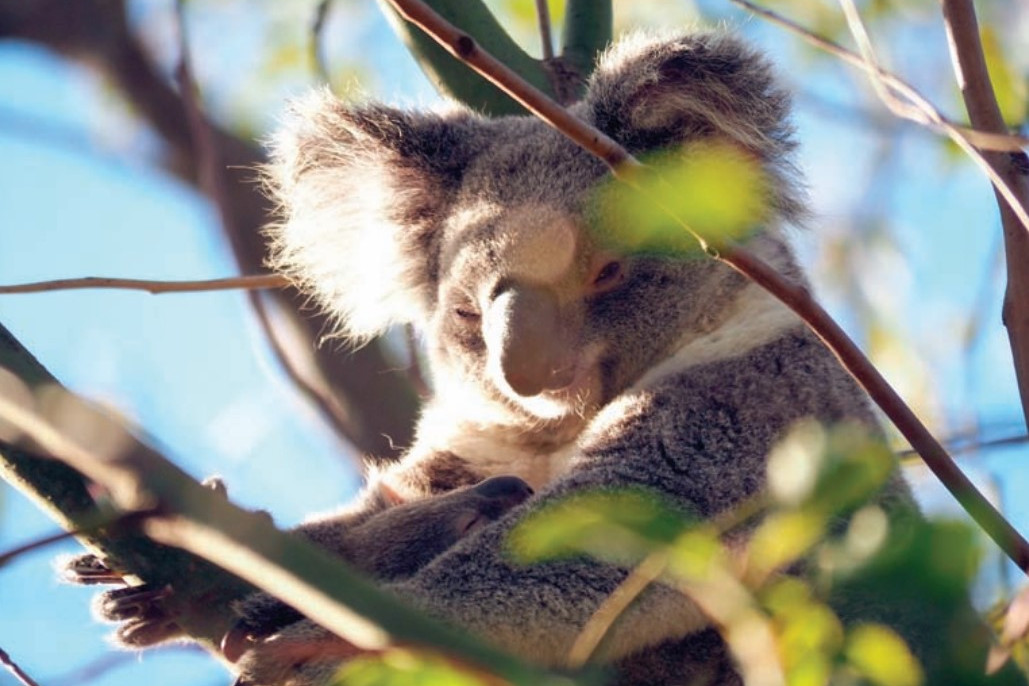News
1 February, 2024
Sadness over mum and joey death sparks
Four-year-old Lucy and her pouch pinkie joey had been known as locals in the Petrie/Lawnton area for a year.

Both were killed in a dog attack when she ventured away from the thin strip of trees meant to be her home, and walked into a large dog’s backyard.
Lucy’s home range covers an area that is highly fragmented, forcing her and other local koalas to navigate between houses and across major roads.
Lucy’s story, unfortunately, is predicted to become more common, as 125,000 new dwellings are planned in the Moreton Bay region by 2046, according to the SEQ Regional Plan.
Moreton Bay Koala Rescue vice-president Nicole Davies said the additional developments posed significant threats to the koala population.
This was not only due to the habitat loss, but the dangers of suburban life.
“The additional fragmentation of habitat makes it harder and harder for koalas to navigate the urban matrix to get from one patch to another,” Ms Davies said.
“The added cars and additional domestic dogs that result from the increased development increases the hazards koalas’ face, [with pool drowning being another threat].”
Mayor Peter Flannery told The Sentinel that, while managing population growth is a challenge, Council is ensuring that the development of housing and infrastructure is balanced with the preservation of flora and fauna.
“We’re one of the only local government areas in the country that is growing their koala population, and since partnering with Endeavour Veterinary Ecology in 2017, we’ve effectively doubled the koala population from 45 to 93 at The Mill,” he said.
“Council has a number of initiatives, including our Land Buyback for Environmental Purposes Program, which has secured more than 100 hectares of ecologically important land since 2020.
“This is in addition to Council’s ambitious goal of preserving 75 percent of Moreton Bay’s land mass from development and keeping 42 percent of the landmass for native vegetation.”
Ms Davies is still urging council to be more “koala friendly” with its planning and developments, saying most eff orts made by local government are ‘bandaid’ fixes, which are put in place after too many koalas have already lost their lives.
“Narrow strips of vegetation (often a line of trees along roads) are supposed to act as a corridor, but many of the corridors don’t even line up. Where the corridors don’t cross roads, they run along property boundaries with domestic dogs,” she said.
Cr Flannery reassured The Sentinel there are several additional efforts in place to preserve the population, including installing more fencing in high traffic areas and using the recent $173,000 federal funding to use thermal drone images to better identify koala habitat in project areas.
“Council has already planted more than 3,600 koala habitat trees to establish the koala corridor within these reserves and the new data collected will assist us to target koala habitat enhancement works and help us prioritise our habitat enhancement eff orts more strategically,” he said.
Regarding the solution of off sets, Ms Davies said these were not given enough thought or planning to be successful.
“It takes many years before trees can be used by koalas and they are often planted in a different area, which has no benefit to the koalas whose habitat is being impacted by the development.
If habitat is off set for development, then the off set plantings should be at a stage where koalas can actually use the trees BEFORE the trees are cleared for development,” she said.
Cr Flannery pointed out a separate big issue facing koala incidents, namely the lack of wildlife hospitals, which are sometimes two hours away.
“Council has allocated the use of its own freehold land parcel at Dakabin to build a wildlife hospital and is advocating for the State and Federal Governments to support the delivery of the much-needed facility,” he said.
“Council is looking forward to working with the State and Federal Governments to support the vital Moreton Bay Wildlife Hospital project to provide the care injured koalas desperately need.”
A solution idea put forward by Ms Davies is to widen current and future ‘corridors’ and make them safe for road crossings (i.e. underpasses and fauna overpasses), retain larger areas of koala habitat and not and stop putting dog parks in koala habitat.
This would then allow additional open space that can be used by people and dogs, instead of trying to fit all open space activities into the limited remaining habitat.
Last year Council was able to deliver 20 new fauna rope bridges and 10 underpasses, 10,000 metres of fauna exclusion fencing along roadsides and rolled out a record tree-planting program with 210,000 new trees.
Always call MBKR 24 hour rescue at 0401 080 333 if an accident does happen or a koala is spotted.

